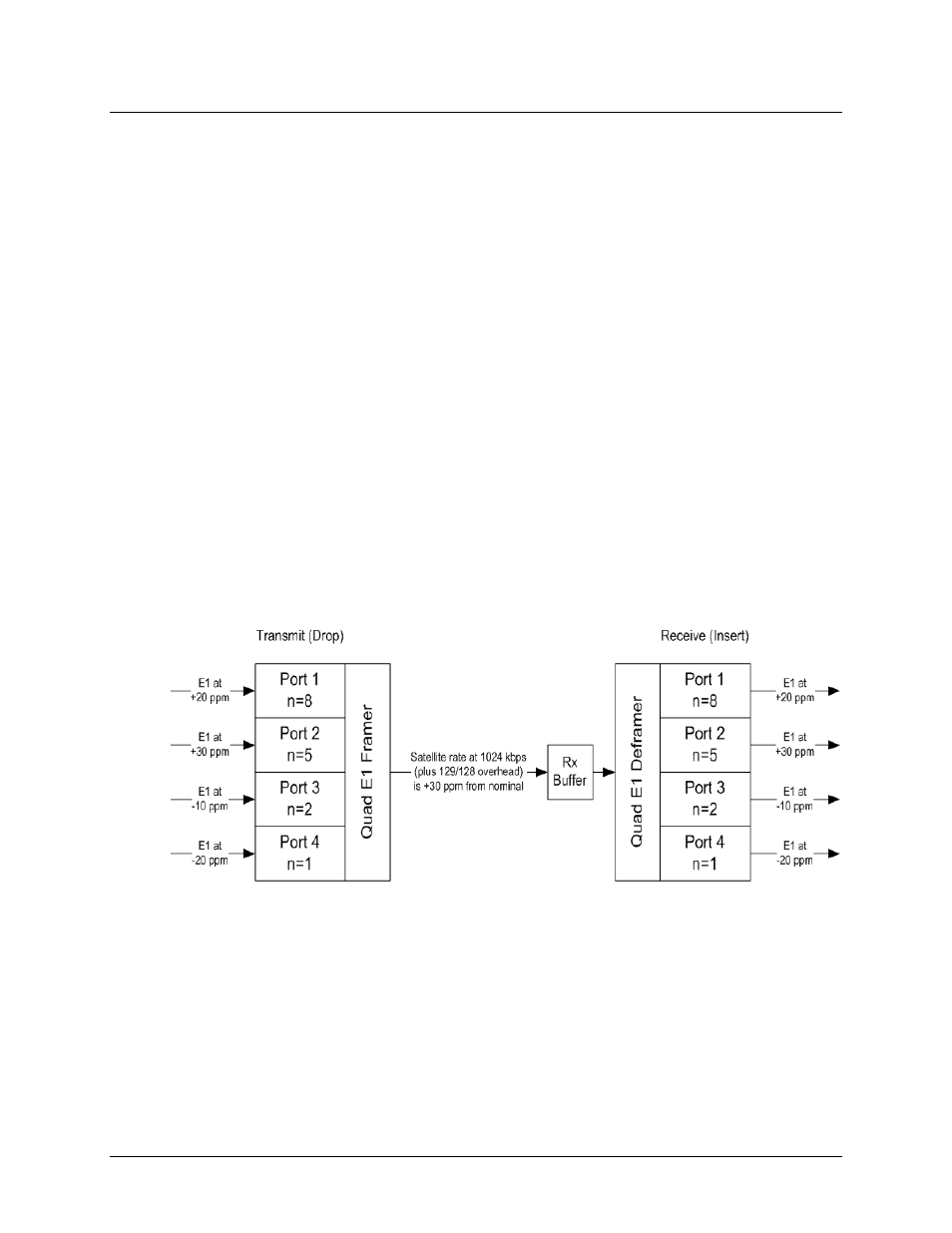12 quad e1 operation – Comtech EF Data CDM-625 User Manual
Page 330

CDM-625 Advanced Satellite Modem
Revision 15
Clock Modes and Drop and Insert (D&I)
MN-CDM625
9–16
9.12 Quad E1 Operation
Up to four complete or fractional E1 streams may be concatenated into a single Comtech
proprietary satellite frame structure using the Quad E1 feature. The “Balanced G.703” and “Aux
G.703” 9-pin D-sub female connectors on the CDM-625 rear panel each provide access to two
ports. See Sect. 3.2.2.2 G.703 Connectors for pinout details.
Selected timeslots for each active port are “dropped” onto the transmit satellite frame in order
of port number and drop channel number, with the reverse “insert” operation on the receive
side. For each port, if n=32 is selected, then it is not assumed that the E1 into the modem
contains framing. Data may be framed or unframed, and the modem will simply transmit the
entire 2048 kbps stream on that port’s portion of the satellite frame; this is why timeslot
selection is disabled for n=32. However, for any fractional value of “n”, the incoming E1 to that
port must have TS0 framing so that the selected timeslots to be dropped can be identified.
Beginning with Firmware Version 2.0.1, changes to Quad E1 operation allow the combining of
asynchronous E1 streams. Prior to Firmware Version 2.0.1, it was important for all ports to be
synchronous to one another in order to operate without data loss – bit stuffing is now
performed on slower data streams to match them to faster ones. Satellite overhead is used to
identify extra data on each port that was sent over the link. The extra data is then removed at
the receiver, so that each port’s timing is maintained. As a result, it is important that the ports
used and the number of timeslots for each port match at both ends of the link. The
recommendation for G.703 requires that the actual bit rate be within ±50 ppm of 2048 kbps.
If asynchronous E1 streams are used at the transmit side of the link, it is important to keep the
receive buffer set to “Rx Satellite”. The “Tx Terrestrial” setting should only be used if all E1
streams are synchronous to one another (no bit stuffing over the satellite frame) and the
resulting E1 streams from the receiver need to be retimed to a local reference.
There is a hardware limitation for base modem boards previous to HW Rev 2.x (see front panel
under the SELECT: FAST menu): Older boards use a common receive E1 clock for ports 3 and 4,
so it is necessary that ports 3 and 4 at the transmitting modem remain synchronized to one
another.
